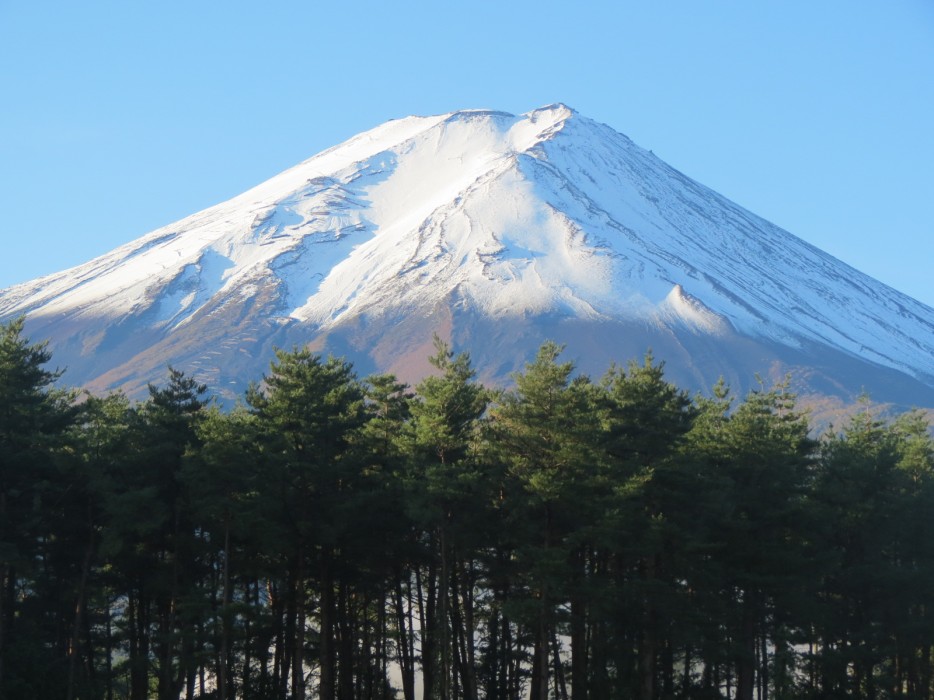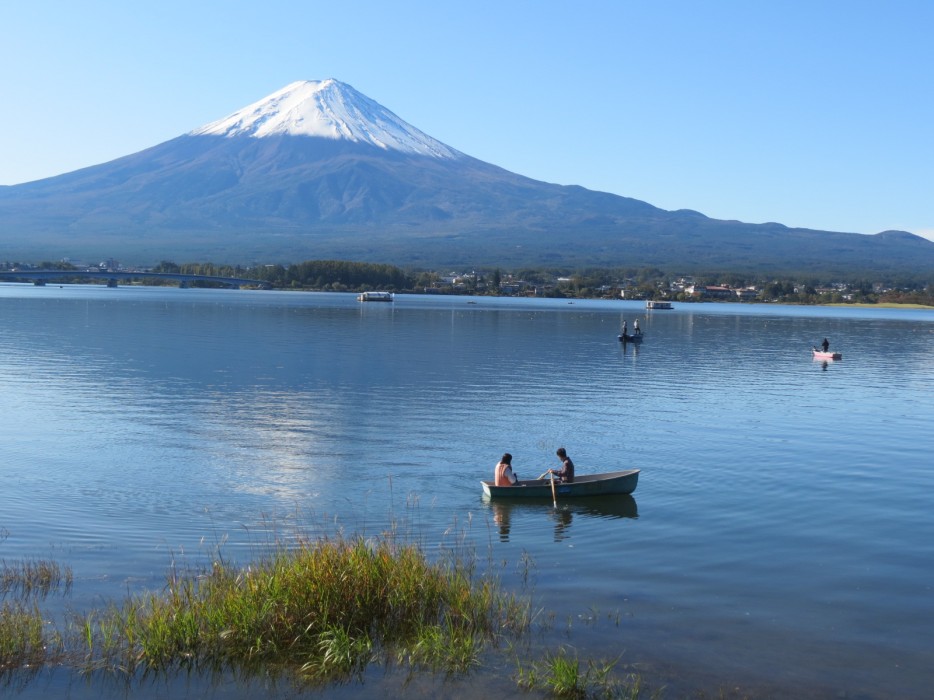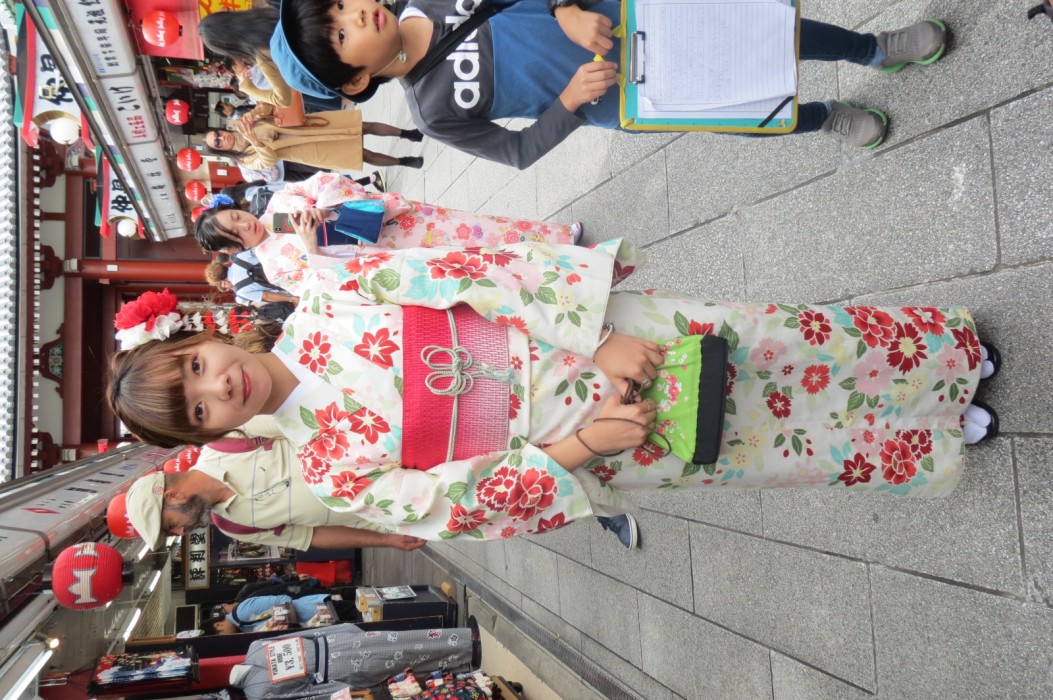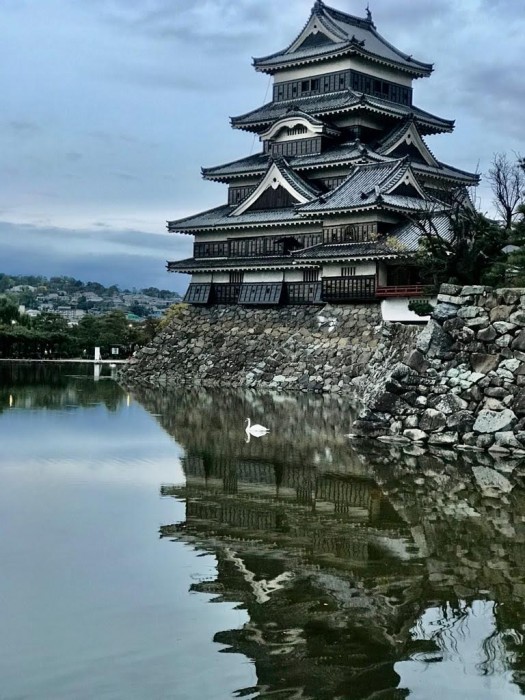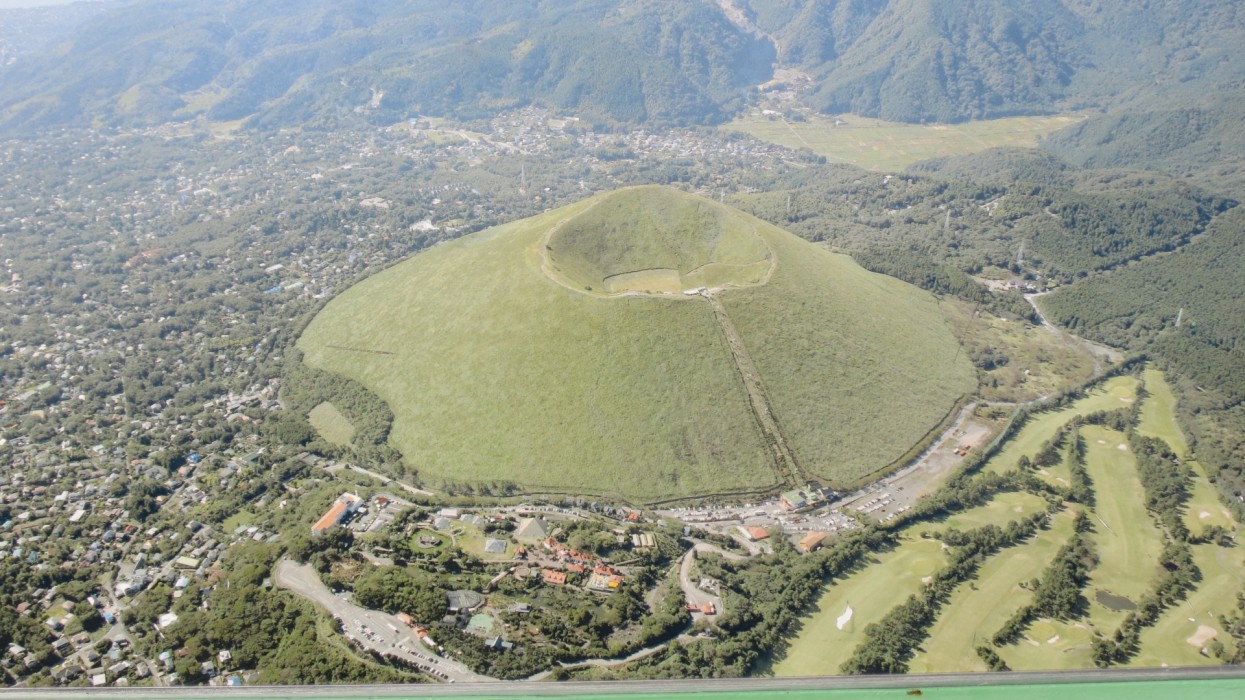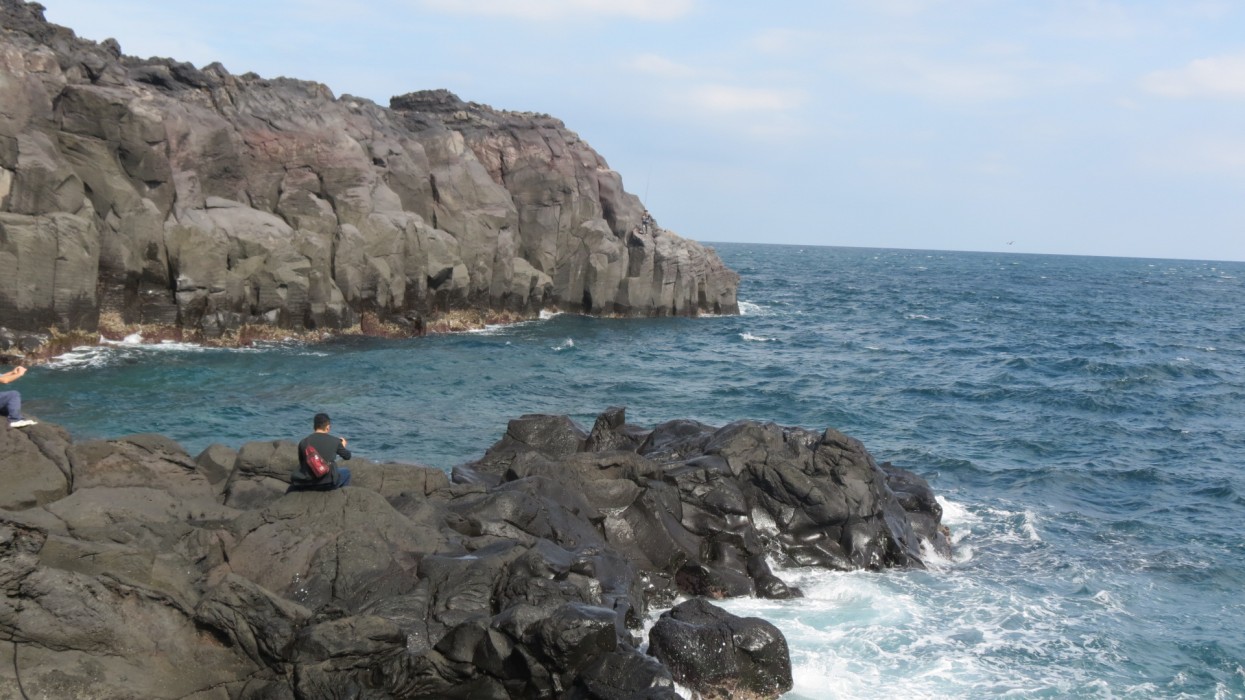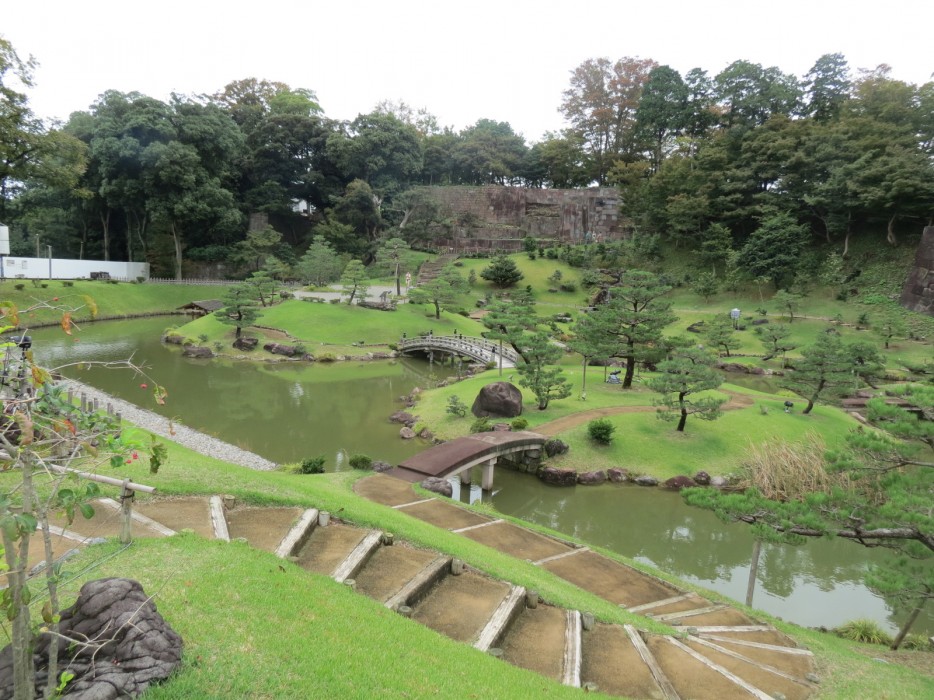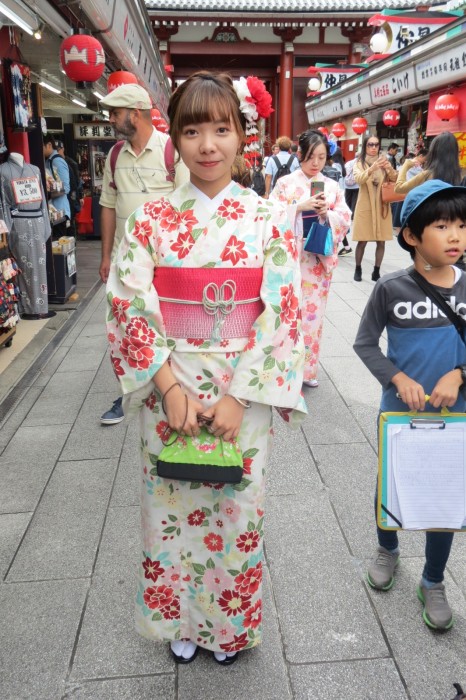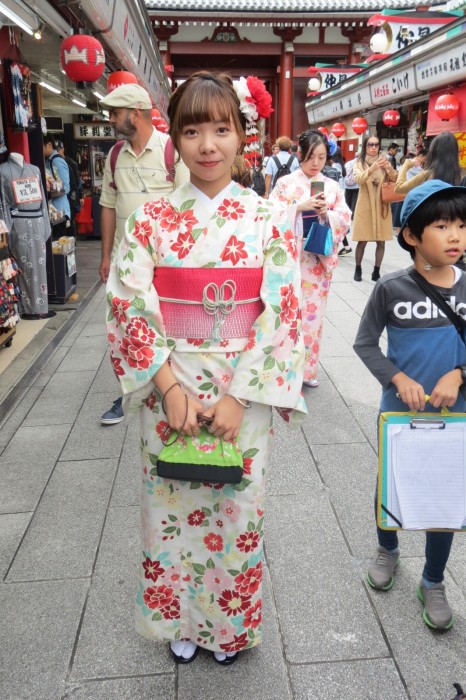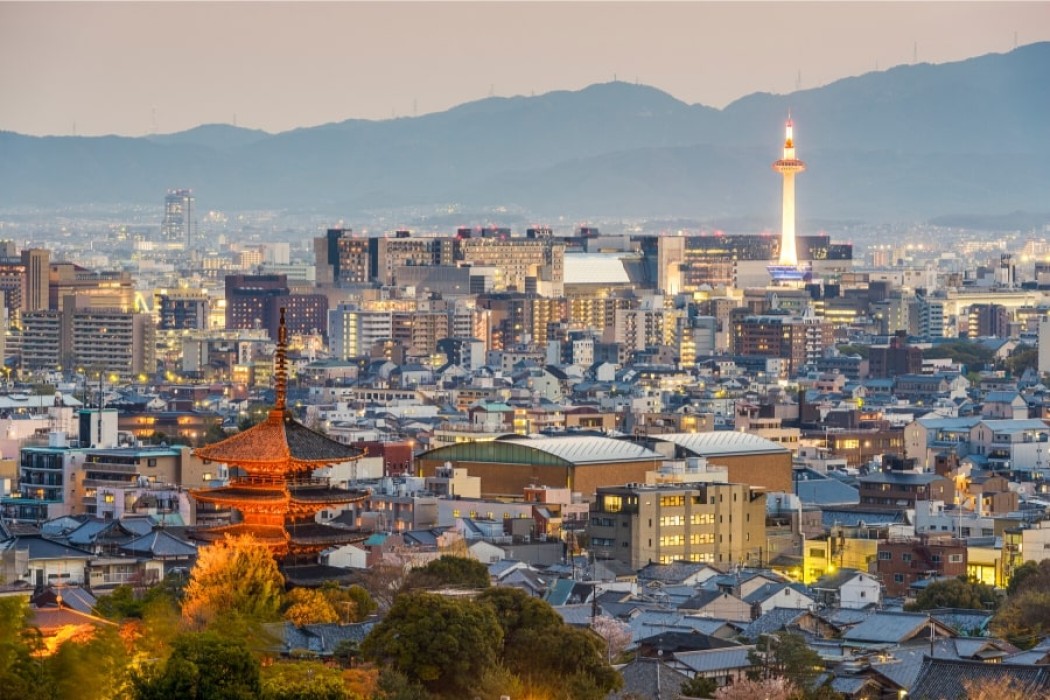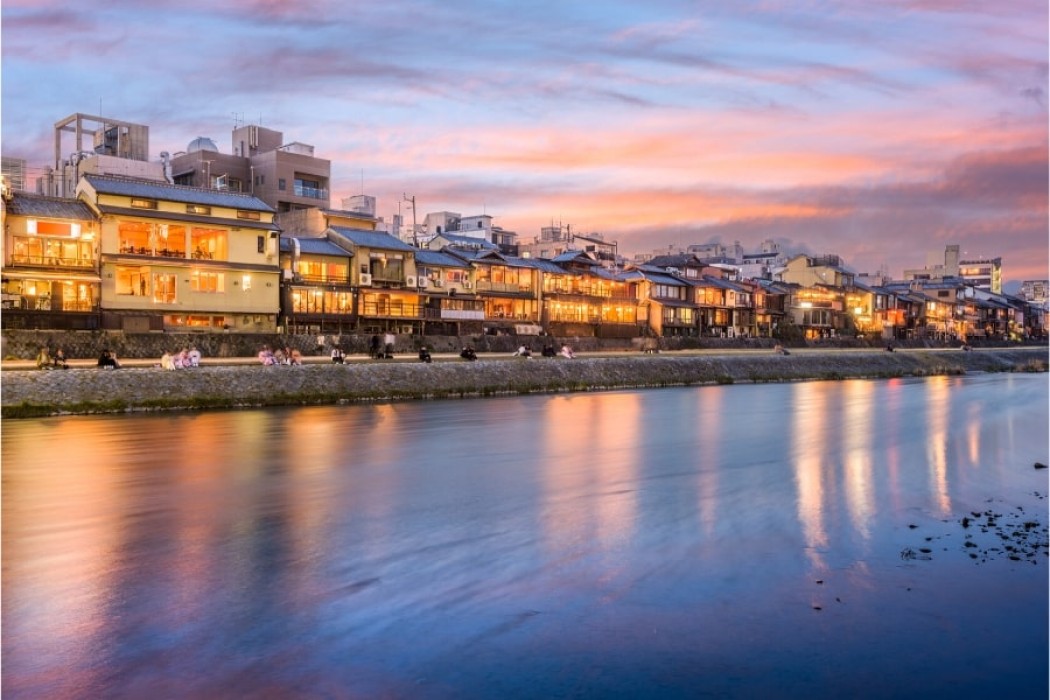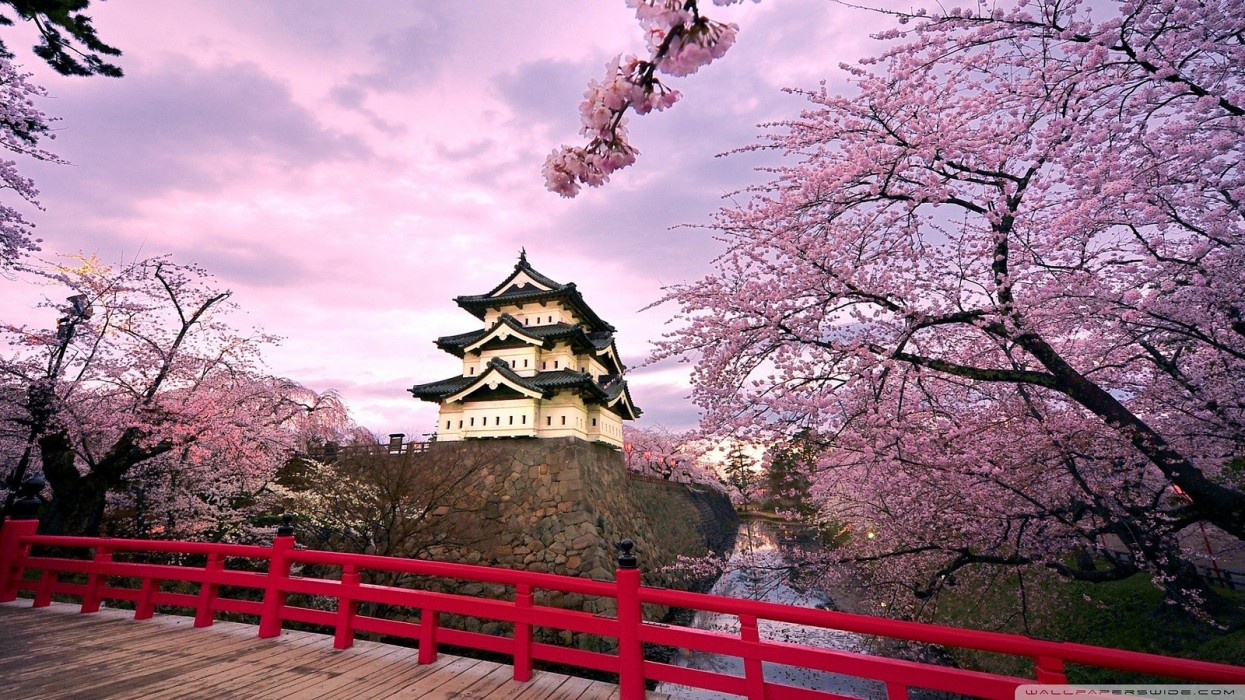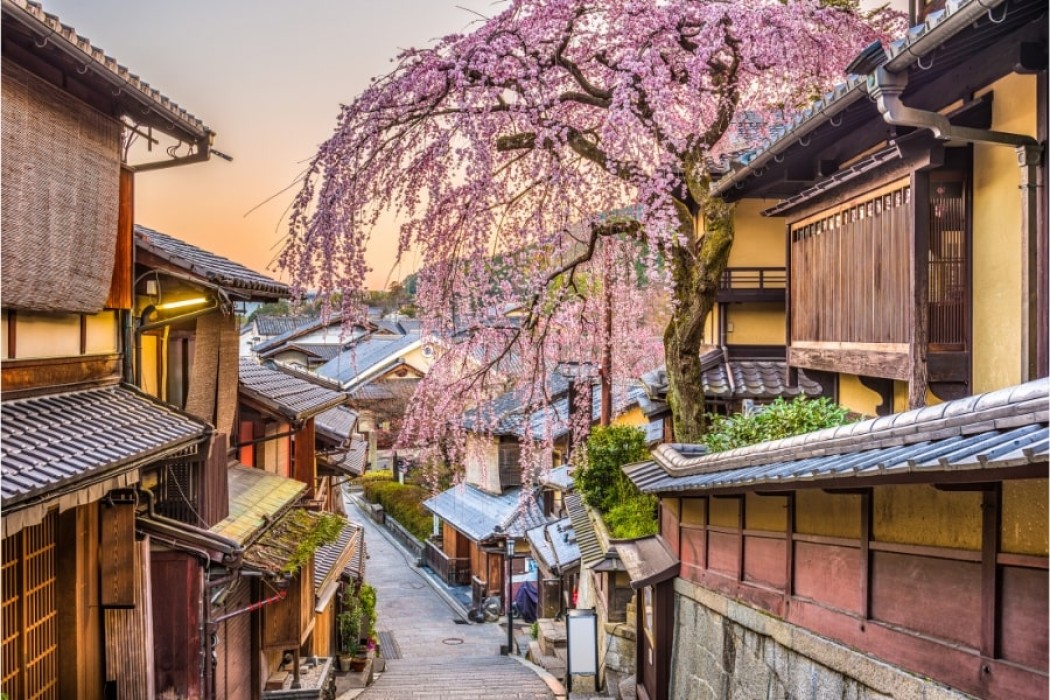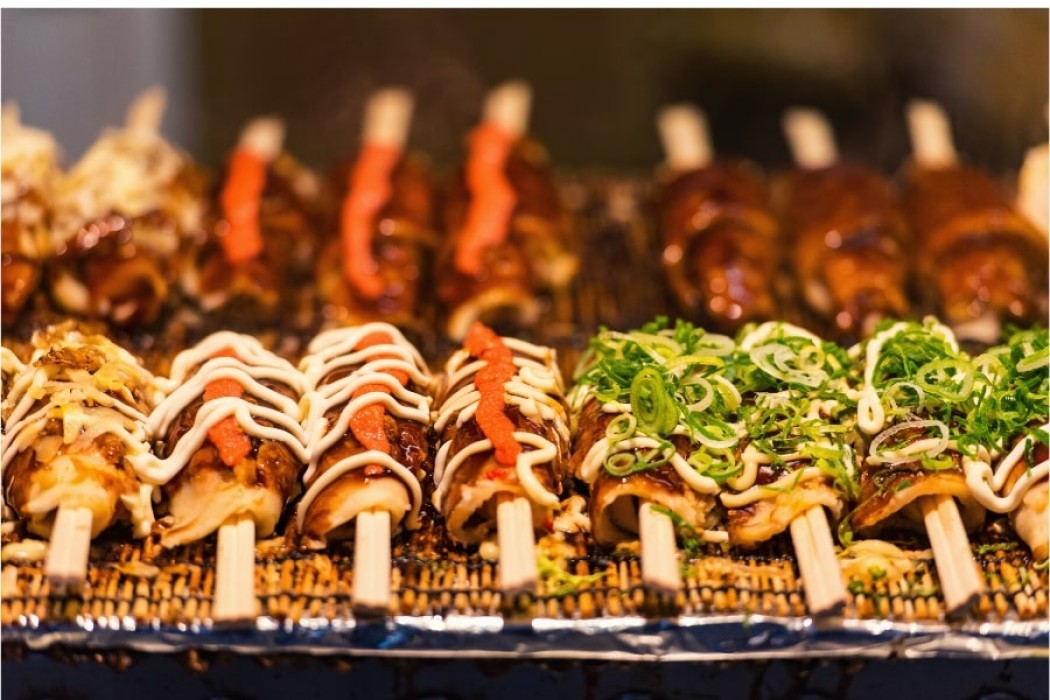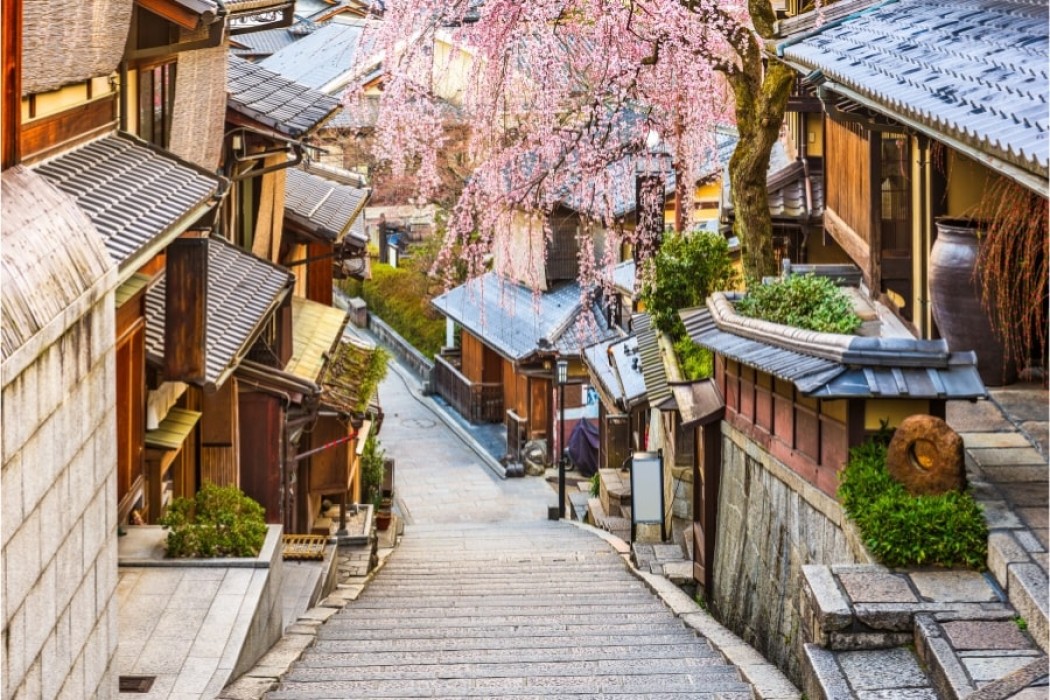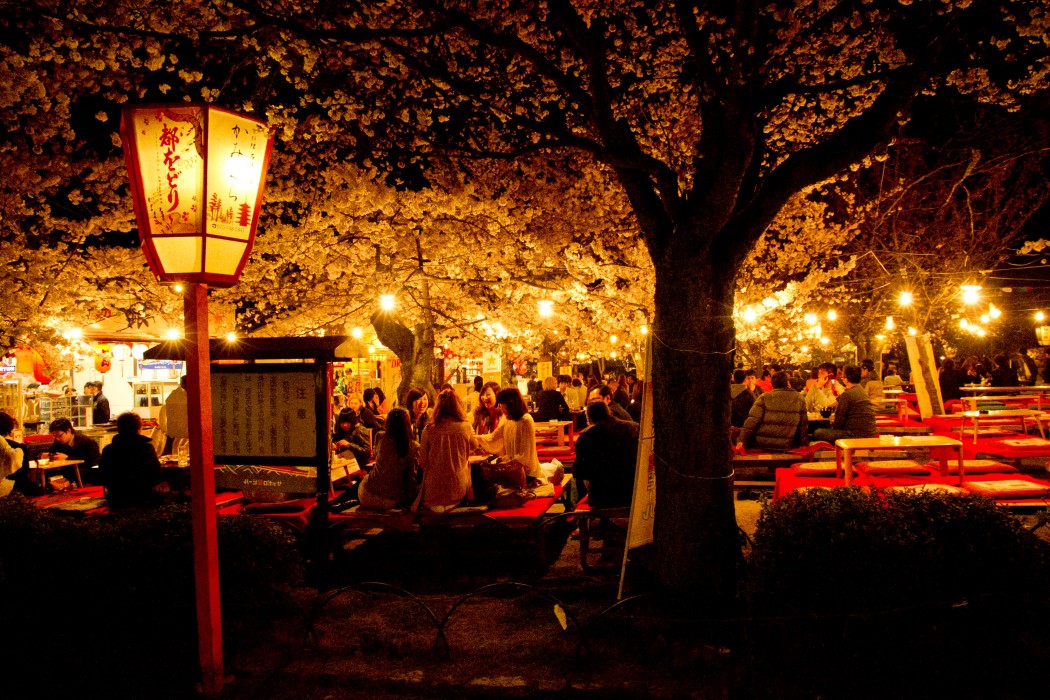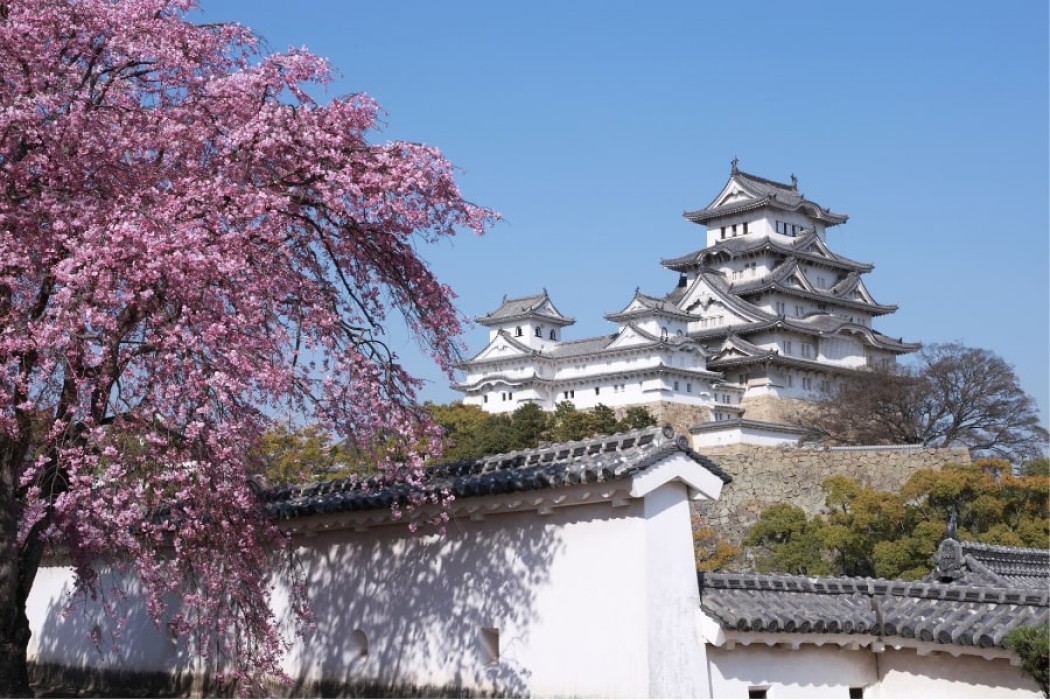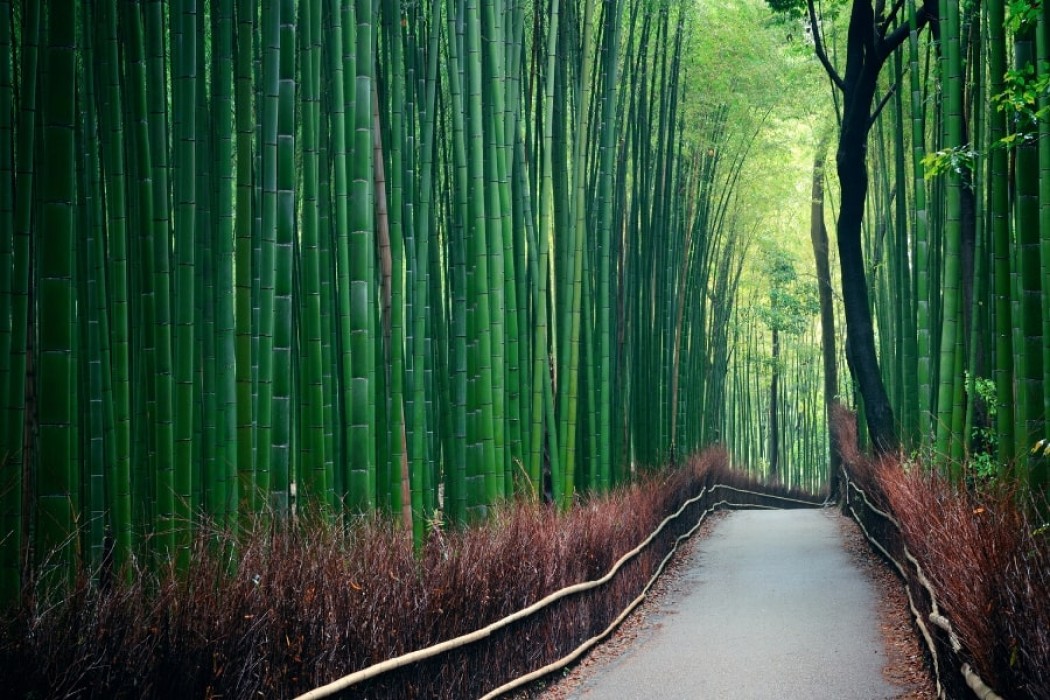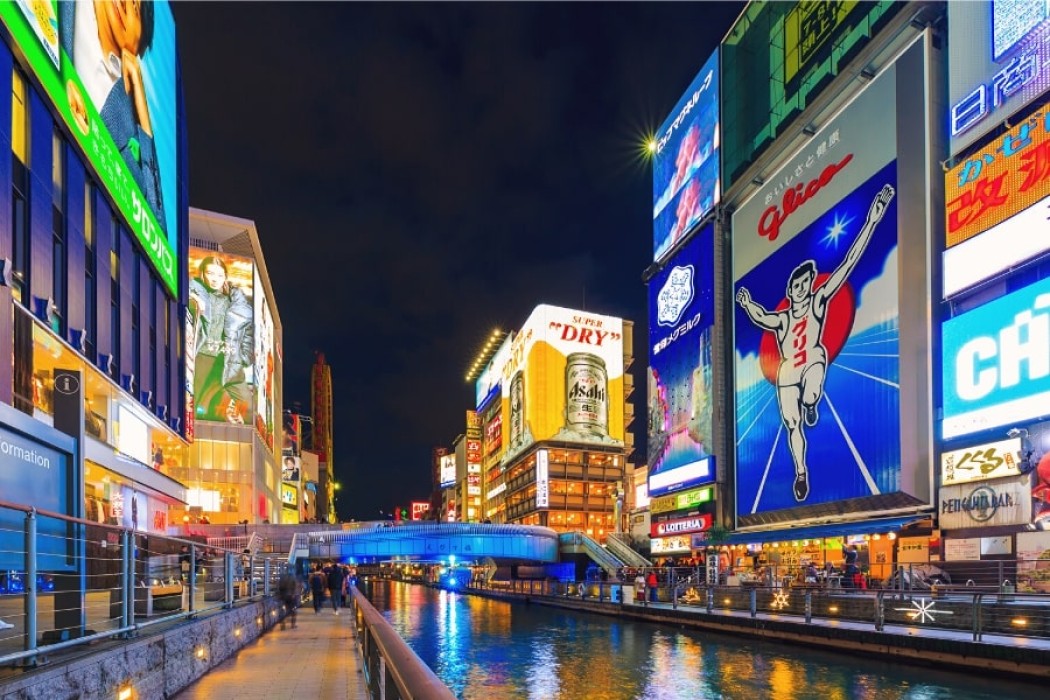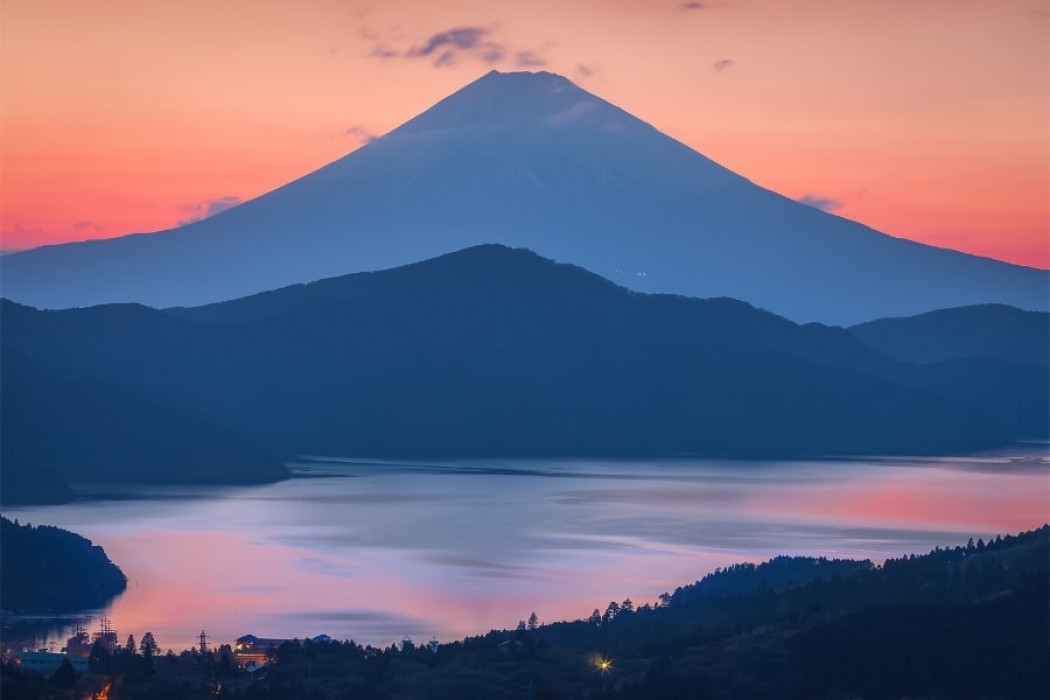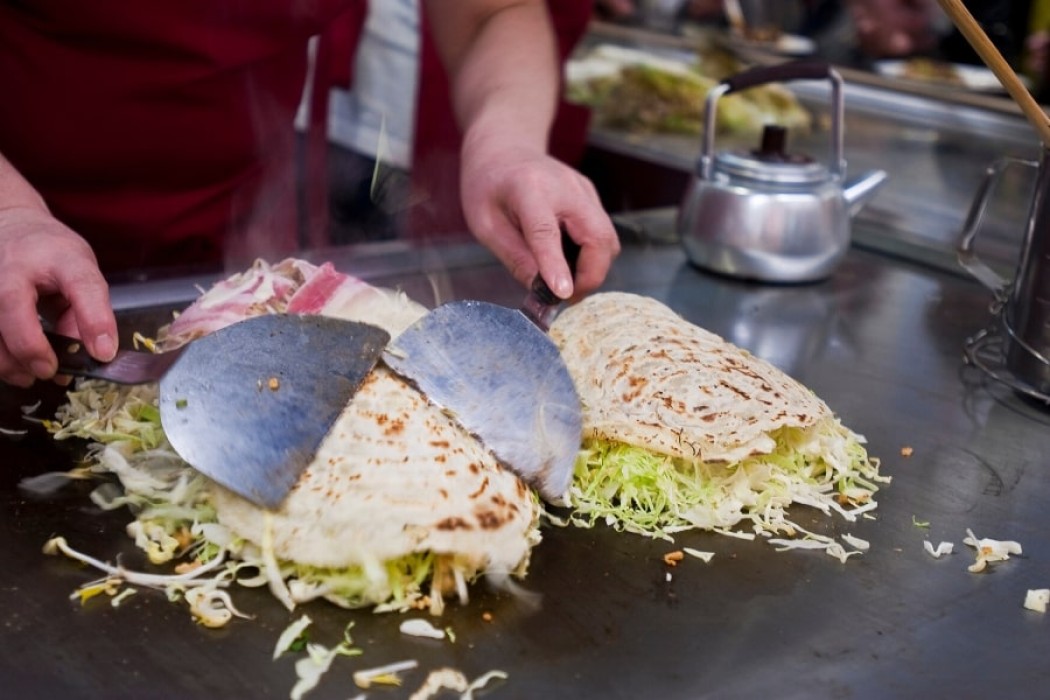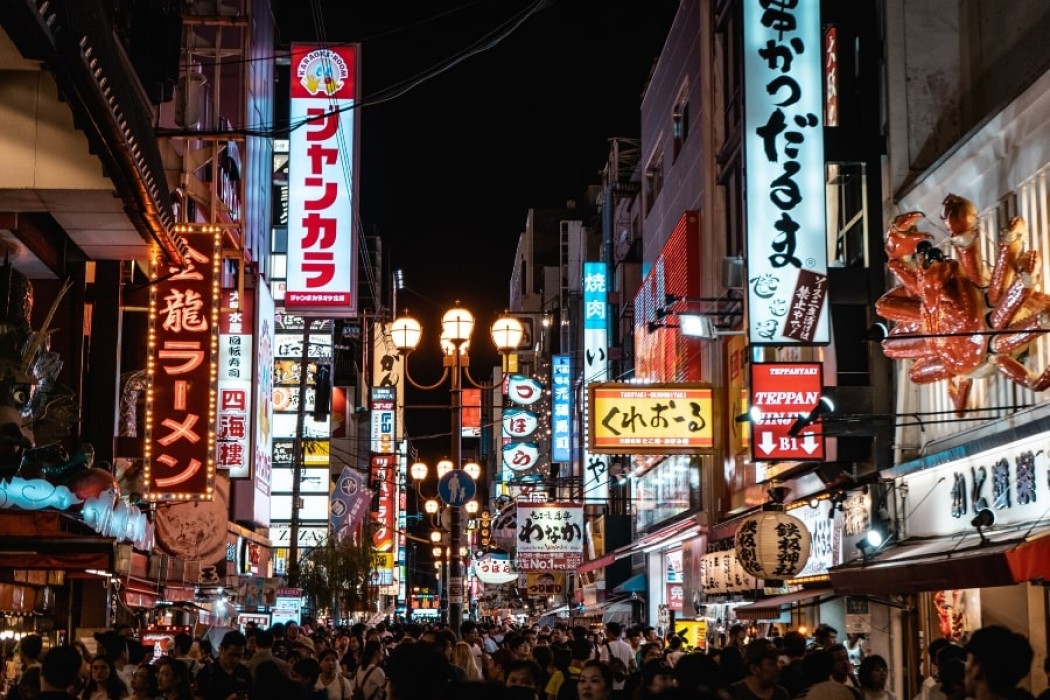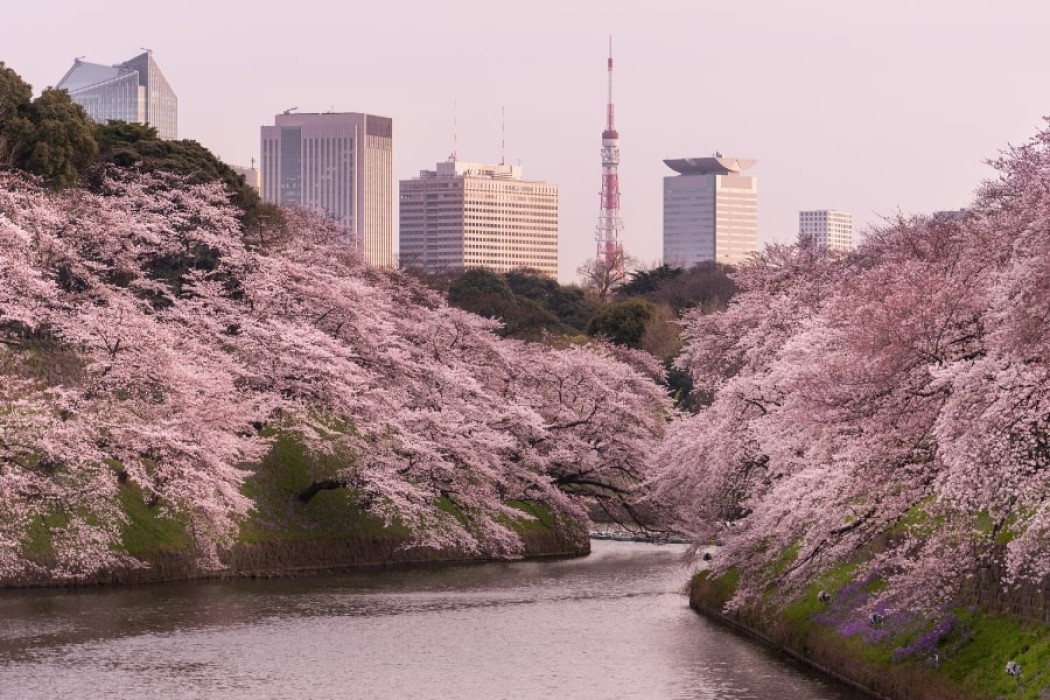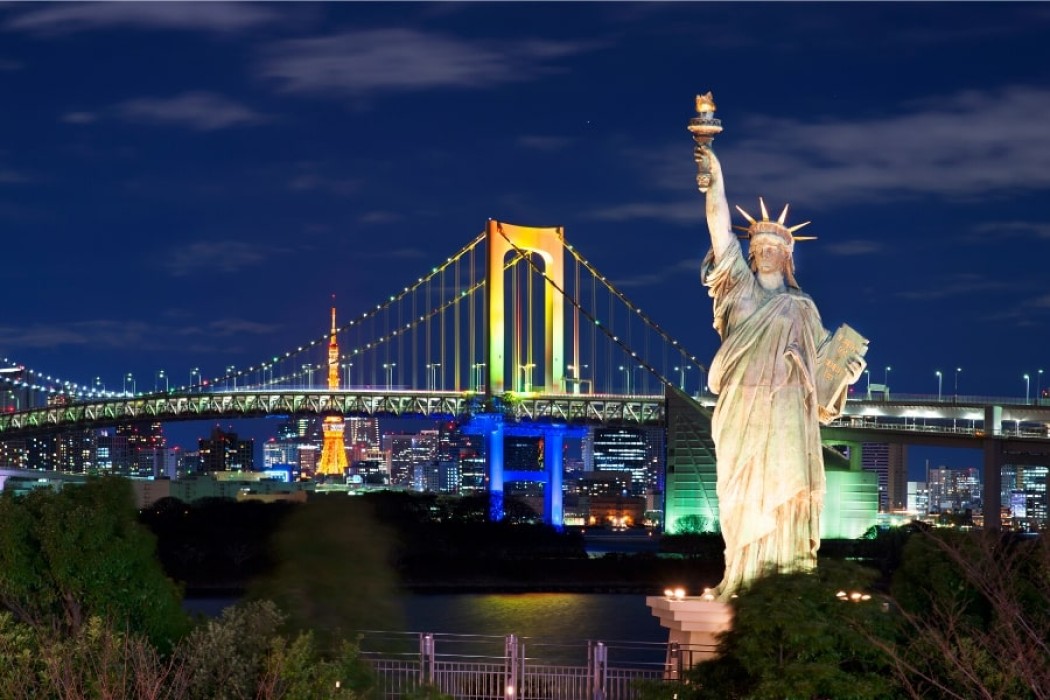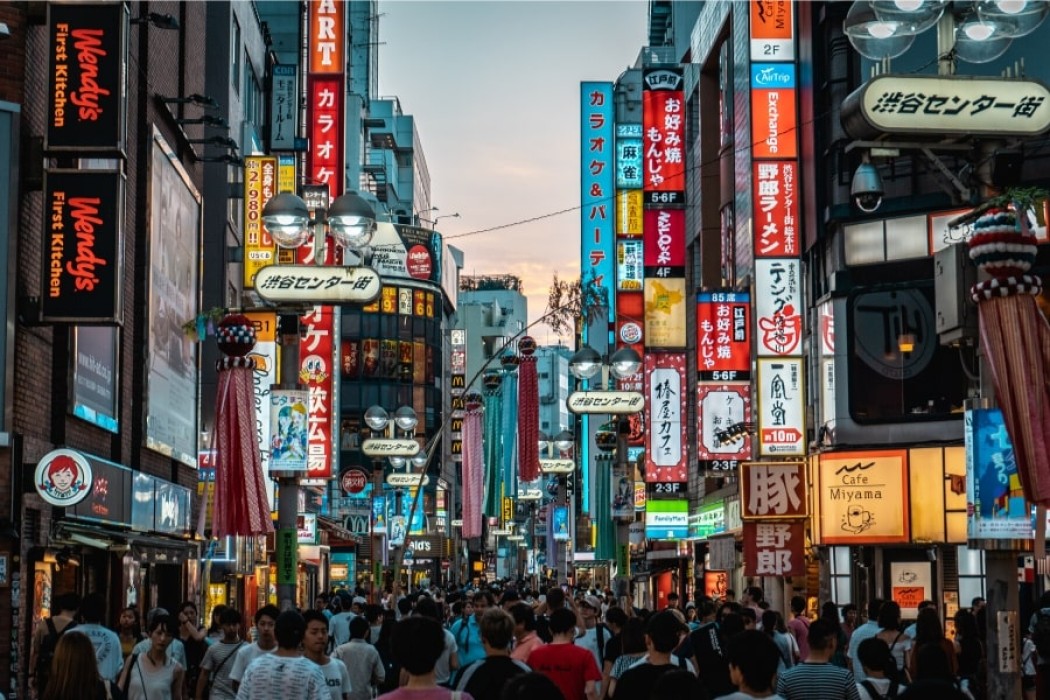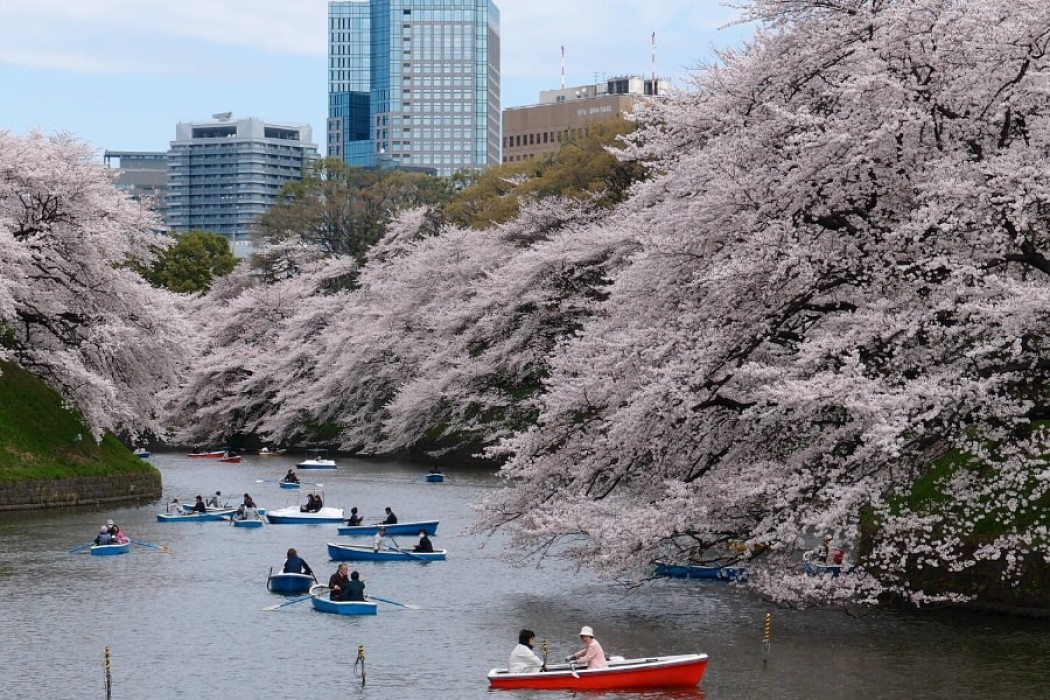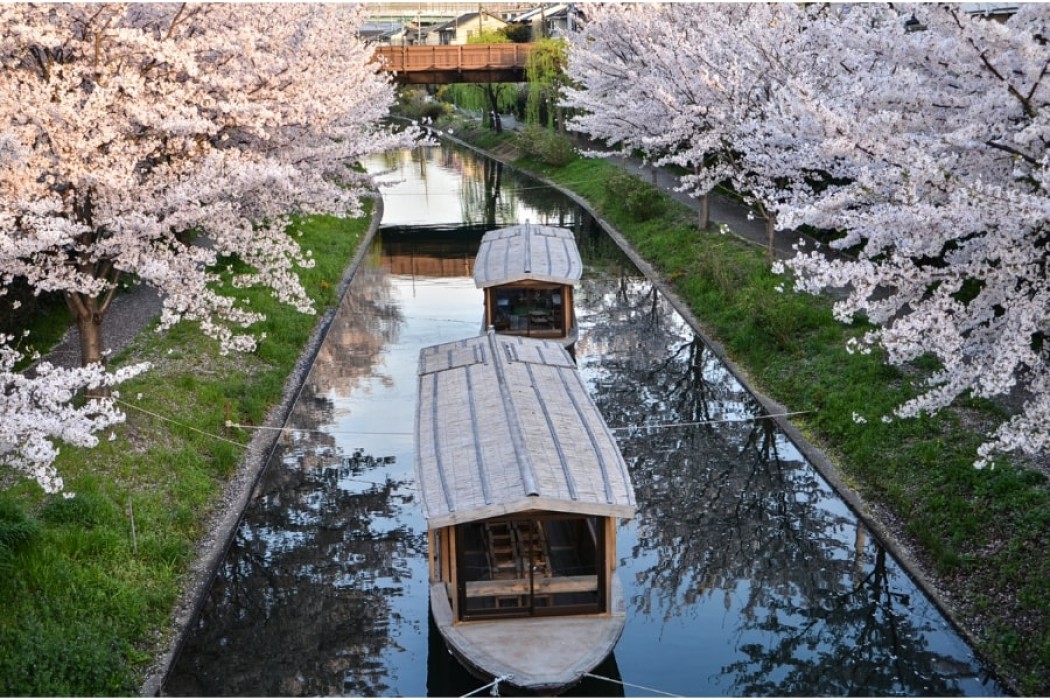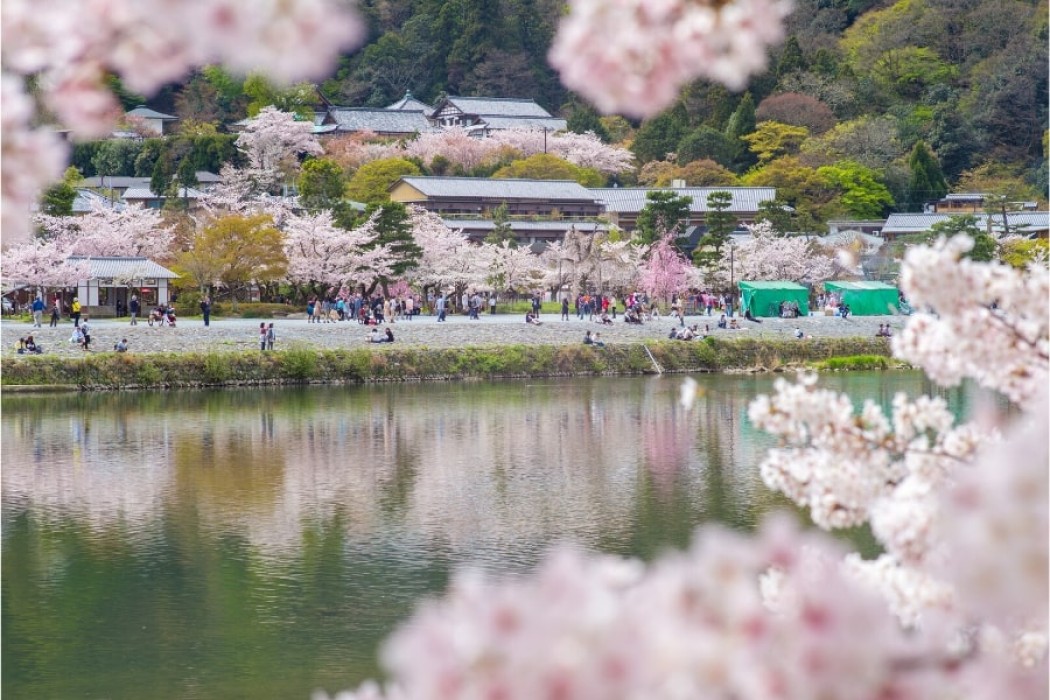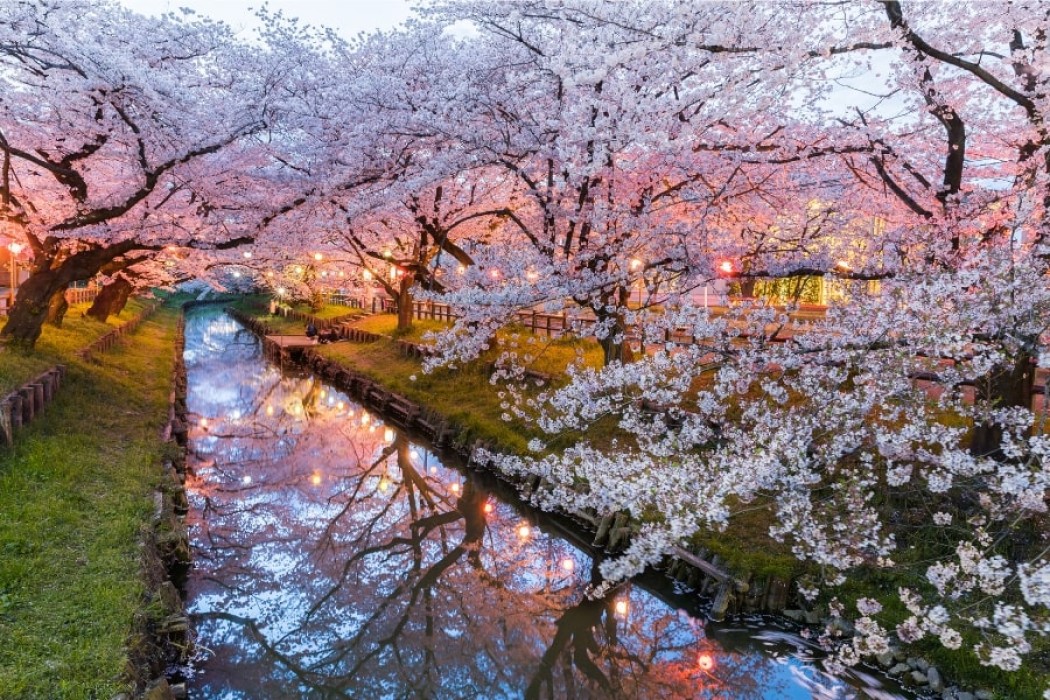Nation of Colliding Worlds16 days, 15 nights
Trip Highlights
- Visit a wasabi farm.
- Tour the longest suspension bridge in the world.
- Tour the famous Himeji castle.
- Watch a local miso brewery at work.
- Learn how Japanese paper is made in the Washi workshop.
- Experience staying at a traditional Japanese hotel while enjoying the hot springs.
- Sightseeing would be fitted to the ideal sakura blossom viewing for your dates.
Trip Itinerary Details
Arrive at Tokyo and transfer to the hotel.
After a short rest we'll go out to Shibuya, a bright and colorful district dedicated to fashion and leisure, which is popular among Tokyo's youth. It's also known for Shibuya crossing, which is famous for being the busiest crossing in the world! We'll also go up to Shibuya sky, A 360° open-air observation deck located on the roof of a skyscraper, that will allow us to enjoy a night sky view of Tokyo from above.
Today we'll get to know Tokyo, Japan's capital since 1868, a huge metropolitan that combines tradition and innovation, where you can see sky scrapers near traditional wooden houses, gardens and temples near busy highways. We'll begin our day in the traditional district Asakusa, visiting the colorful Sensoji temple which is the most important Buddhist temple in Tokyo, surrounded by bustling streets.
From there we'll continue to Ginza, the luxurious business and pleasure district, characterized by its interesting buildings and grand stores. While touring the area, we'll go to one of the fanciest department stores in Japan and see the many stalls that offer a rich variety of food of all kinds.
Up next we'll go up the famous Tokyo Tower, from which we could observe the seemingly endless Tokyo skyline.
From there we'll take a driverless train to the artificial island Odaiba. Arriving at Tokyo bay, we could observe the modern Japanese urban architecture. Going down to the harbor we'll then be able to see one of the most impressive urban views in the world.
Today we'll start from to the famous Shinjuku district, which has the largest and busiest train station in its center. Around it you can find Tokyo's famous leisure, commerce and business areas. There we'll get to watch the opening ceremony of the Isetan department store, an interesting anthropologic experience that demonstrates the service and work ethics of the Japanese worker.
Next we'll stop at Shinjuku Gyoen Park for a lovely picnic under the blossoming cherry trees, the park's greenery and cherry blossom contrasting the urban landscape all around.
From there we'll continue to the young and vibrant Harajuku district, and visit the famous Meiji temple that was destroyed in ww2 and was rebuilt around 50 years ago. From there we'll go through the designer avenue Omotesando, where we could see many luxurious stores and buildings designed by some of the vest architects in the world. Then we'll continue through Takeshita dori, a street which is considered to be the 'Mecca' of street fashion for the Japanese youth.
Today we leave the big city early in the morning for Hakone, which overlooks the iconic Mount Fuji, surrounded by forested mountains and a volcanic crater lake. We'll start by taking a walk on a tiny 'peninsula', where a former imperial villa is surrounded by a beautiful garden with plenty of cherry trees. From there we'll observe the spectacular views of Ashi Lake and its surrounding, and if the sky is clear we might catch a glimpse of Mount Fuji.
Next we'll ride the funicular to Owakudani, a young volcano from which we could see a wonderful view of Mount Fuji.
Then we'll visit an amazing open air museum, with statues from renowned artists from all around the globe that integrate into the surrounding garden and the mountainous view.
Afterwards we'll drive off towards Kawaguchi lake to the base of Mount Fuji, where we'll stay the night.
Today our first stop would be at the garden and exhibition hall of kimono coloring artisan Kubota Ichiku, whose works astound people worldwide. We'll learn about his unique coloring method which was forgotten to time and revived by Kubota.
From there we'll drive north to Nagano perfecture, the most mountainous area in Japan.
Arriving at Matsumoto city, we'll visit a family factory which produces miso, a staple of Japanese cuisine, the traditional way. We'll learn about the historic importance of miso as a food source, and its place in contemporary Japanese cuisine.
Next we'll arrive at Matsumoto castle, also known as 'Crow Castle' for its dark exterior. It is one of the only 12 castles that survived in their original form to this day.
Then we'll go visit a wasabi farm, where we'll go into the wasabi 'fields' and learn about their fascinating growing method.
From there we'll go to visit a hot spring town, in the midst of the Japanese Alps, we'll tour the main street and get a taste of the atmosphere and architecture that are characteristic of traditional hot spring towns.
In the evening we'll enjoy a special ryokan experience- a traditional Japanese hotel. We'll be served a luxurious traditional Japanese dinner, and could later go soak in the hot springs. Finally we'll spend our night in a tatami floored room and sleep on fluffy futons.
Today we'll start our day at Jigokudani- 'Hell valley'. Going along the valley, we'll pay a visit to the Japanese macaque monkeys that bathe and keep warm at the hot springs in the forest.
In the town of Obuse we'll visit a museum dedicated to the renowned woodblock printing artists Hokusai, that lived in the town later in life. 'The great wave off Kanagawa' is one of most known Japanese artworks in the world.
We'll continue to tour the town, which is also known for its chestnuts, and enjoy the special atmosphere of the place.
Next we'll set out to our next destination, Toyama city. There, in the town center, we'll visit a unique building designed by Japan's national architect that is used as a culture center, library and glass museum.
From there we'll continue our journey to Kanazawa, where we'll sleep in the next two days.
Good morning to Kanazawa, a magical city that was the capital of the second most important prefecture in the Edo period. It has kept its characteristics as an historic center for culture and art to this day.
We'll visit a neighborhood with typical samurai homes that were preserved, and go into one to learn about the lifestyle of the samurai from the period where they ruled Japan.
Next we'll visit Yuzen hall, where we'll learn about the beautiful art of kimono dying.
Then, we'll continue towards the colorful Omicho market, full of plenty of interesting fish, sea food, vegtebles, fruits, flowers and more.
Afterwards we'll go to Kenrokuen garden, which was originally the private castle garden of the local lord. This garden is considered to be one of the top 3 most beautiful gardens in Japan, and is especially striking in autumn.
We'll end our day at Higashi-chaya, the tea house district that kept its historic look. There, we'll also visit a place that specializes in gold leaf art, which is especially typical to the area.
We'll start our day in Gokayama, a mountain range in which villages with unique style of houses were preserved.
There we'll participate in a workshop where we'll learn about the production process of traditional Japanese paper, and make a small souvenir to take with us.
We'll continue towards Shirakawago, and tour a picturesque village in the mountains, and see up close the unique traditional houses with the slanted straw roofs.
We'll get to visit the home of one of the locals and hear from the owner about the history of the house and the local atmosphere.
Finally, we'll arrive at our final destination fot the day - Takayama. A wondrous town on the foot of the Japanese Alps, famous for its characteristic local craft and spectacular festivals.
We'll tour the festival floats exhibition hall, showcasing the floats used in the local autumn and spring festivals. Afterwards we'll go wander the streets of the old town area that kept its historical appearance.
Early in the morning we'll go tour the morning market where we could see (and buy) the produce of local farmers and artists, with souvenirs exclusive to this area.
On our way inland we'll deepen our understanding of local cuisine and pay a visit to a sake brewery, to learn how this famous rice wine is made.
Afterwards we'll arrive at Gujo Hachiman, a town located near a stream between the mountains that kept its traditional character. Many fresh water canals can be found across the town, and they're used by the locals for their daily needs to this day. This town is also known for producing some of the super realistic food models you can see in restaurants all across Japan. After looking at food model creations, we'll go watch a demonstration of the local traditional dance that is performed by the town’s folk at a famous festival that takes place every summer.
From there we'll continue to Seki, a town that for hundreds of years kept the tradition of metalsmithing and creating samurai swords, the best swords in the world that are made in the traditional method to this day and are highly collectable. Today the tradition also continues with the production of high quality knives.
Lastly we'll end our day at Inuyama castle. This beautiful castle is known to be the oldest castle to remain intact from the 16th century.
Afterwards we'll arrive at Nagoya, the fourth largest city in Japan, where we'll stay the night.
Today we'll go out south to the town of Toyota, where we'll visit the Toyota car museum. There we'll learn about the company's history, the way they perceive business and the work culture of Japan.
After a good lunch we'll arrive at the busy train station and go aboard the shinkansen, a bullet train that can travel at a speed surpassing 300 km/h. The shinkansen will 'fly' us to our next destination, Hiroshima.
From there we'll take a ferry to Miyajima, a holy island that the locals have used as a spiritual center for the past thousand years. We'll tour around the island, see the iconic tori gate that comes out of the water at Itsukushima temple, and ride the funicular to mount Misen for a spectacular view of the ocean and the islands in the vicinity.
Today we'll start at the westernmost point of our tour, Hiroshima, that was destroyed by the atomic bomb in 1945 and symbolizes the devastating result of such weapons, as well as the unprecedented recovery and growth of the Japanese society and economy.
We'll visit the Hiroshima Peace Memorial Park and the museum dedicated to the story of the atomic bomb that hit the city.
Afterwards we'll go tour the main factory of the car manufacturer Mazda (Or Matsuda as pronounced in Japanese). We'll get to see both new and old models and the fascinating assembly line of the factory.
Finally, we'll end our day with a traditional experience, eating the local specialty, the Hiroshima-yaki.
Today we'll start off by going on the bullet train again, which will take us back east.
We'll stop at the UNESCO world heritage site of Himeji castle, also known as the white heron castle for its white color and elegance. The view of the castle on the backdrop of the cherry blossom is considered one of the 'most Japanese' and most beautiful views.
From there we'll take the funicular to the top of mount Shosha, where we'll visit a temple complex that is more than a thousand years old. The complex built on a heavily forested mountain top gives the place an air of mystery.
Next we'll drive to Kobe, where we'll go to the visitor center of Akashi Kaikyo Bridge, the longest spanning suspension bridge in the world. The bridge is one of three bridges that connect the main island of Honshu to Shikoku Island, and one of the most wondrous engineering achievements of Japan.
Towards evening hours we'll arrive at Kyoto, where we'll be staying.
Today we'll get to know Kyoto, the traditional capital of Japan for upwards of a thousand years, a city with countless attractions, famous temples, castles, gardens, hidden gems etc.
We'll visit many interesting and colorful sites and enjoy the autumn 'festival' that engulfs the city together with the locals.
We'll go down to the roots of Japanese culture, while touring the historic Higashiyama district, seeing ancient temples and walking the old streets. There we'll also get to experience a traditional tea ceremony, and hear about the importance of 'the way of the tea' in Japanese culture.
Finally, we'll go to Maruyama Park where the locals enjoy and celebrate the cherry blossom. As evening comes we'll take a stroll in the streets of the traditional Gion district, where the Geisha are active to this very day.
Today will begin by traveling to the west side of town to Arashiyama, which was once a rural area where the nobility of Kyoto used to go lounge. We'll take a walk along the streets filled with small wooden houses up to a magnificent bamboo grove, and visit the bridge that goes across the river.
From here we'll continue to one of the most iconic temples in Japan, the golden pavilion, a zen temple surrounded by a large and well-kept garden.
At lunchtime we'll go to explore the plentiful food market Nishiki Ichiba, visiting the various food stalls, browsing and tasting the unique and colorful wares presented for sale.
Next we'll go to Nijo castle, where the shogun resided while visiting Kyoto. From there he would have governed the city and entertained guests.
After coming back to the city center we'll tour around Kyoto station.
Today we'll start at to the famous Fushimi Inari, a temple known for the thousands of orange tori gates that are placed all along the steep mountain, and climb up one of the most famous trails in Japan.
From there we'll continue to the old capital of Japan - Nara. There we'll visit the ancient temple Todaiji, which is the largest wood structure in the world and the symbol of the city. We'll also walk around the deer park, where deer who are 'the messengers of the gods' roam freely, as they've been doing for more than a thousand years.
Next we'll go to to Osaka, the 3rd largest city in Japan and the economic and commercial center of Kansai and the west of Japan. We'll got to observe the city from the top of the Umeda sky building, and when evening comes we'll tour the famous Dotonburi Street and its surroundings, brimming with markets, people, merchandise, shops and restaurants of all kind.
Then, we'll go to our hotel in Osaka for our last night in Japan.
Today is our last day in Japan; we'll go home with the many experiences we gathered and with a taste for more.
Tour Remarks
- The tour starts in Tokyo and ends in Osaka.
- The tour is planned especially for experiencing the unique and impressive Japanese spring.
- The route may change in accordance to the weather.
- There may be changes in the order in which certain sites and attraction are visited.
- The route may change in accordance to local festivals and holidays.

